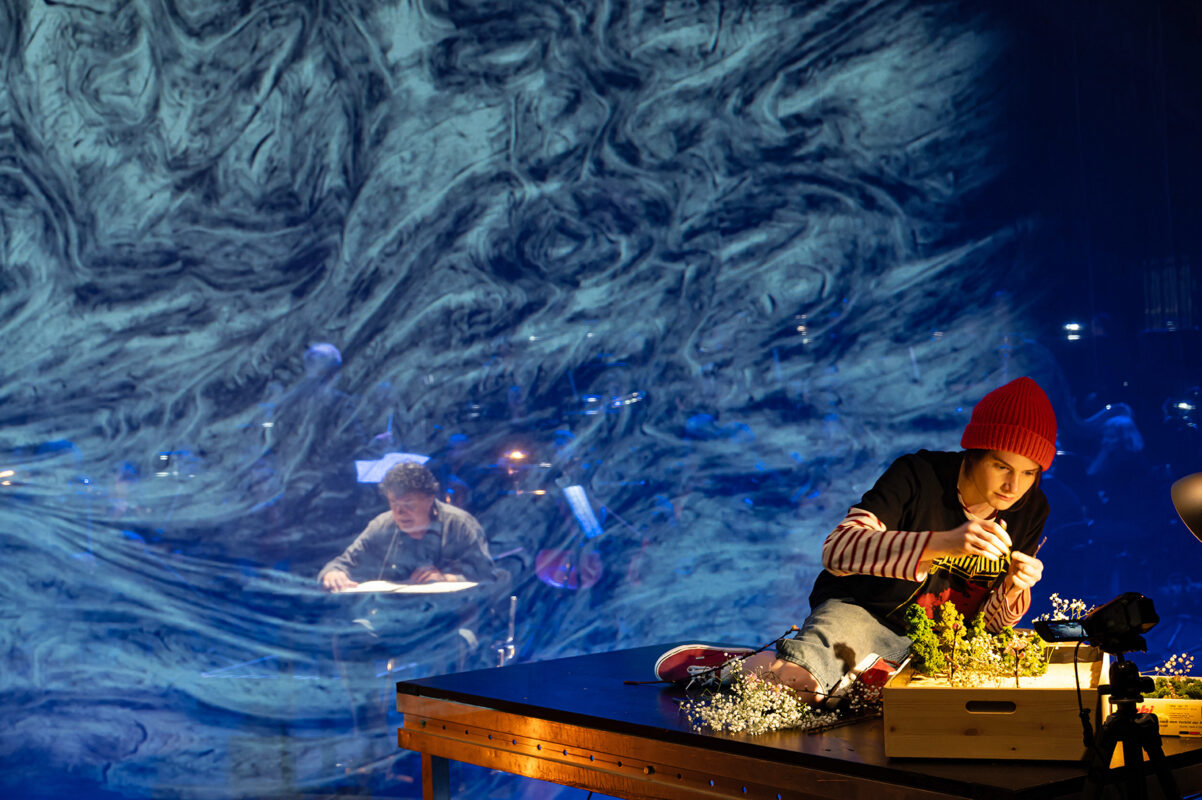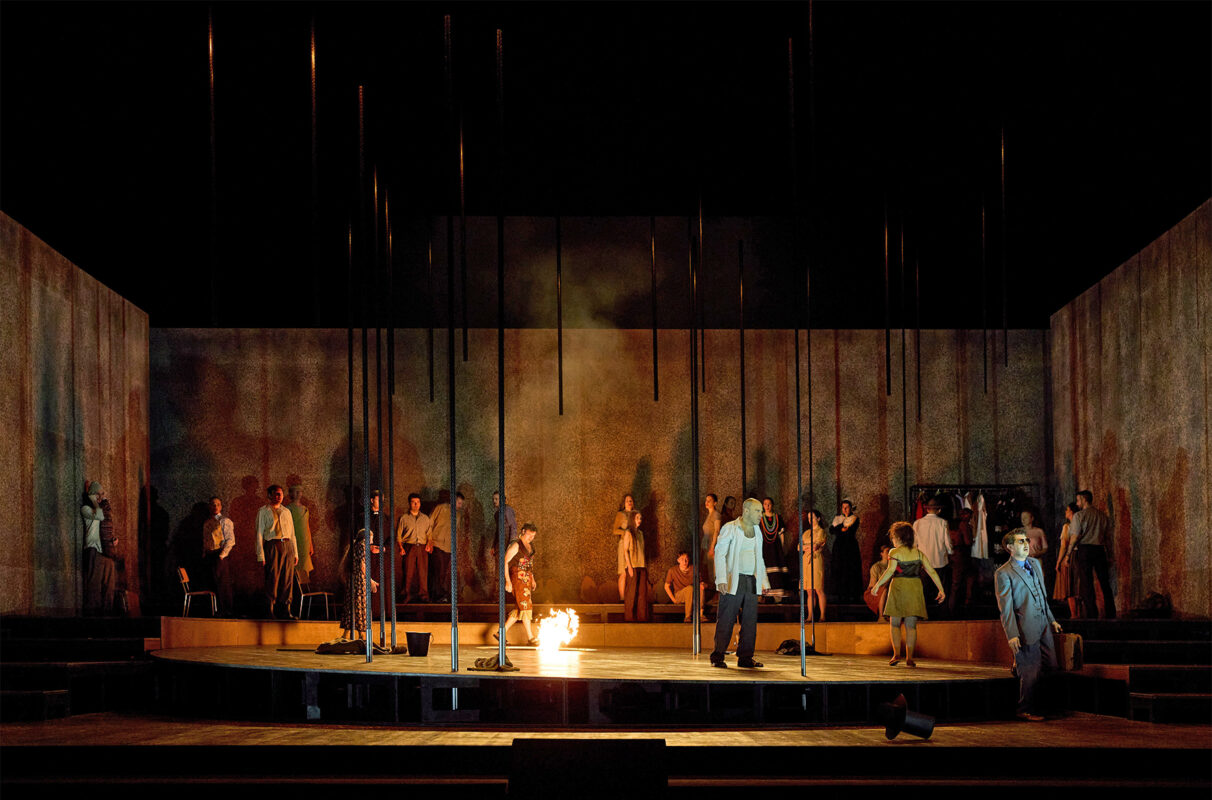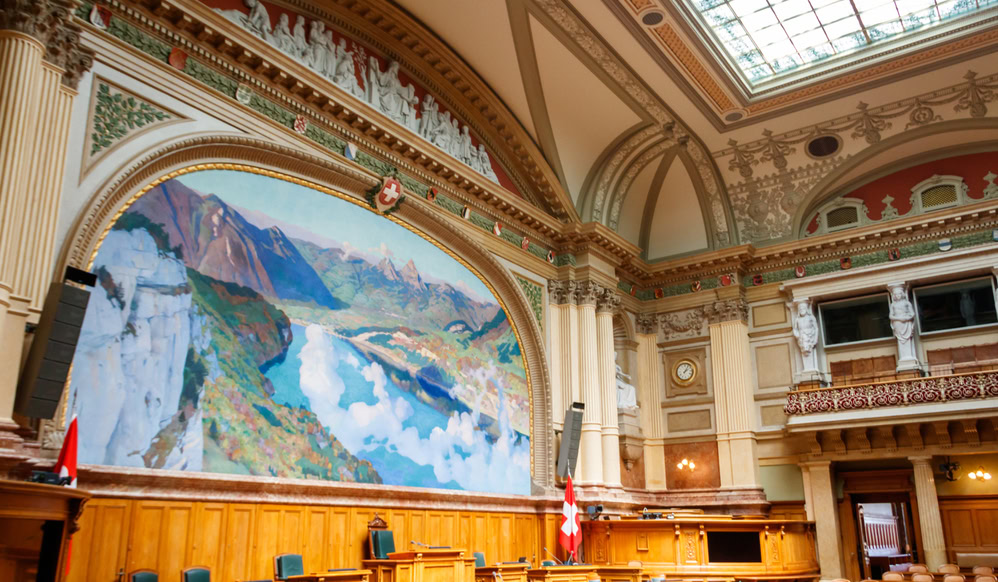Frédéric Bolli's homage to Prague
Frédéric Bolli's second symphony was premiered at the opening of the Constance Music Festival on July 21, 2022. It is based on five poems by the composer.

Prague has always been a place of the arts and music in particular. In the Baroque period, Jan Dismas Zelenka was educated here, Mozart composed one of his late symphonies for Prague, his Don Giovanni was premiered there, and in the late Romantic period the music of composers such as Antonín Dvořák and Bedřich Smetana radiated out from Prague into the world. The Swiss composer Frédéric Bolli's second symphony, with dem nicknamed Prague Spring Symphonystrictly speaking, has little to do with it. There are some baroque compositional techniques in it, such as the canon, which of course is not applied in the sense of a pronounced neo-baroque style. Rather, Bolli's composition refers to very private memories during a stay in Prague with his school class when he was a teacher at the cantonal school in Frauenfeld.
The world premiere took place as part of the opening concert of the Constance Music Festival, July 21-29, 2022. Bolli's Spring Symphony followed Sergei Prokofiev's weighty Piano Concerto No. 1 in D flat major op. 10 and Erich Wolfgang Korngold's demanding Violin Concerto in D major op. 35, performed by the Südwestdeutsche Philharmonie Konstanz under the baton of Benjamin Lack. The venue for the concert was the former church of the former Dominican monastery on the island in Lake Constance, in the ballroom of the Inselhotel. Without question a beautiful place for a concert. And it is not very often that you have the opportunity to sit by the lake with the composer after the performance, have a cool drink and chat about the work. "Every day I wrote a short poem in free verse, each time in a different place in old Prague," Bolli told me. "These verses are now a good twenty years old. There are five poems in total, which give the titles to the five movements of my symphony and are scored for soprano solo. In this respect, my second symphony is not just instrumental in character, but has the structure of a five-part cantata for solo soprano and orchestra. A very personal homage to Prague."
Instrumentally, the theme of the first poem Travestita di legno savored in a rhythmically intricate way with lots of wood percussion:
Travestita di legno
Wood masked
she was stuck
in street canyons,
kluftverrannt in
gray tasks,
until the voices
sued horror
they triggered
idle contemplation.
Only then did she turn
for seconds
glances at the light.
The opening movement of the symphony is entitled "Allegretto". An instrumental prelude unfolds in a correspondingly lively and bold manner. As soon as the soprano enters, following the wordplay in a free melody, the symphonic changes to a cantata. Singer Ania Vegry performs her part with both expression and humor. String chords and colorful dabs of woodwind in twelve-tone rows accompany the sung lyricism. Bassoon and clarinet solos enliven the whole as do accentuating timpani. The second poem with the title Postmodernism precedes the second, slow movement with the tempo marking 'Largo'.
Postmodernism
Atavistic savory wisdom
slumber through my
wildest daydreams.
National sleeping patterns
comb through the icy
Suburbs.
Changes in ownership
announce the most frequently performed classics,
while faithless mischief
spreads thickly.
In this movement in particular, Bolli proves himself to be a master of timbre, especially when the bass clarinet and contrabassoon enter into a dialog and are later joined by timpani and cor anglais. A plaintive melody probably expresses the "customary sleeping patterns" and "the icy suburbs" mentioned in the poem, even before the soprano utters the words. Baroque forms also appear in a faster section, which lend the movement a playful note and may refer to the words sung later "Handänderungen künden von meistgepielten Klassikern". This movement ends tumultuously and fortissimo.
The quiet third movement becomes the actual slow movement of the symphony. A floating string line appears pale and dissonant, interwoven with a bright flute solo. The soprano adds the third poem to all of this, lamenting and glowing College with.
College
Udderly muffled interaction
fizzles on long threads.
Krost it in view,
it remains compatible.
Escape is on the horizon
unexpectedly,
and breathes tearfully
easier after all
the oil-soaked air.
After so much floating lament follows a kind of scherzo on La primavera. Significantly, the tempo of this colorful piece is "Tempo di valse". Even before the singer begins the verses, this Prague waltz gallops into the spring day with sparkling brass pomp and snappy rhythms. This scherzo almost sounds like a neo-baroque composition.
La primavera
Greetings kunterbunte,
round lilac bushes
permanently blown away
sky blue
Sunny avenues,
dubious
Worries
to sudden rest,
stay
Side blows emphasizing form
in yellow loops
color-captured and
unspoken
in barely concealed,
traditional considerations
stuck.
Finally, in the finale freely adapted from the poem Jazz dumplingsthe homage to Bohemia and Prague is taken a little ironically to the extreme. After all, dumplings are an important side dish in hearty Bohemian cuisine. The movement begins with swinging tone sequences including pizzicato to rhythmically rumbling percussion. Solo oboe, solo flute and solo bassoon join in. Certain harmonically expressive passages of the poem, such as "slow-fox dancing lament orgies", are accompanied by broad string chords.
Jazz dumplings
Do not hide the fact
can be dwindling
swinging sounds that
to the lush and barren hustle and bustle,
last minutes of the
running out of load
from felt waste dumps
soon slowfox dancing
Lamentation orgies will follow,
meanwhile rail chatter
and claustrophobic rolling
inevitably the art bombast
to rumble.
Finally, the symphony ends abruptly in fortissimo, "rattling off the artistic bombast". Some listeners said that the Prague Spring Symphony has what it takes to become a real repertoire piece.
-

Frédéric Bolli. Photo: Fritjof Schultz








